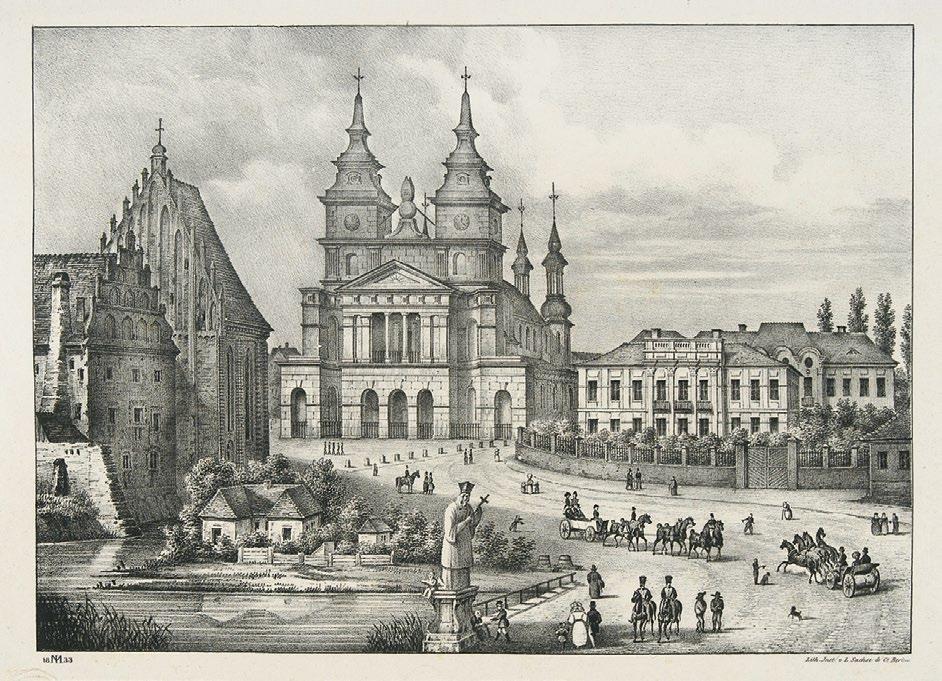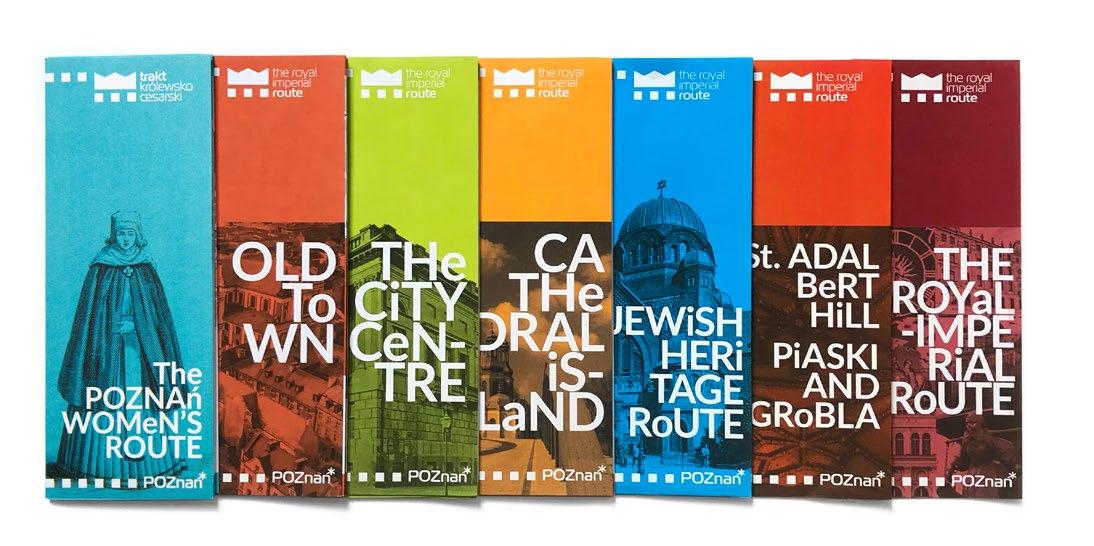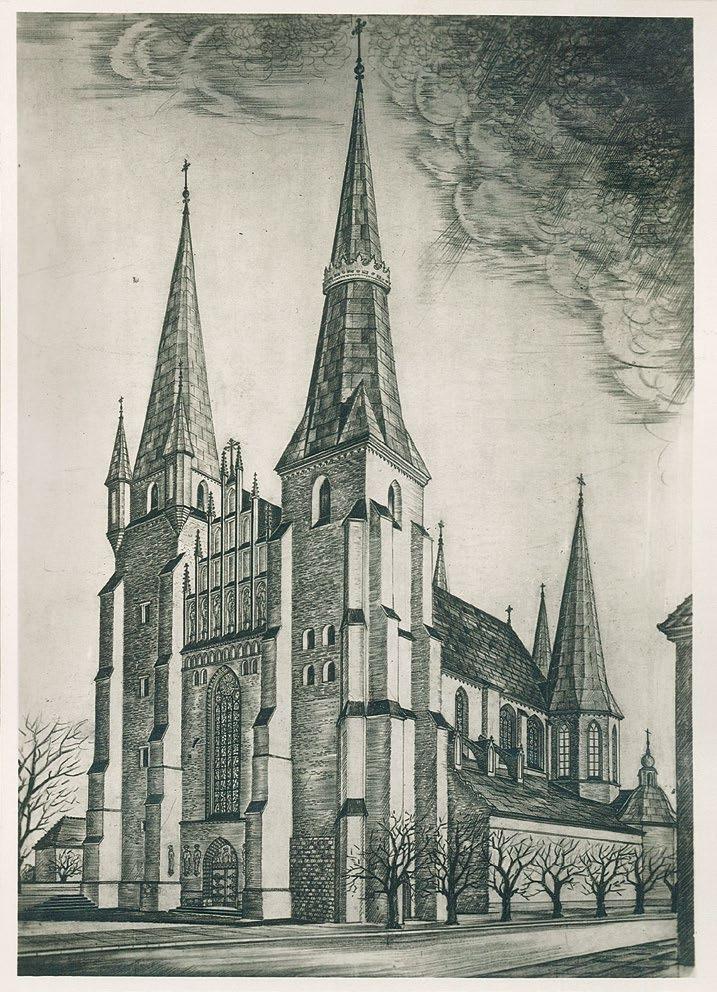
5 minute read
The power of the elements
The power of
the elements Dominik Robakowski TRAKT CTC
Advertisement
Fire, water, earth, air – their joined forces created the Cathedral Island. Over the years, the inhabitants of Poznań have developed a unique relationship with the elements. The Cathedral Island abounds in places where the fate of the human beings has intertwined with the fate of nature.
FIRE
Let’s begin with fire. Without fire, the Cathedral Island would be a much less pleasant place to live. It was fire that made it possible for people to keep their houses warm and prepare hot meals. Its incredible properties allowed people such as blacksmiths, potters and brick makers to do their job. People felt respect for fire, which is why it was often used in religious symbolism. Small round holes in the eastern wall of the Church of the Blessed Virgin Mary on the Cathedral Island are remnants of these religious practices. They were made when people lighted fires using special augers during the celebration of the Holy Saturday.
The settlement’s wooden architecture as well as the fact that initially furnaces remained open contributed to numerous fires. However, one of the most fierce fires took place centuries later when the magnificent structure of the Cathedral was burning. This happened for example in 1622 when fire burnt the Cathedral’s roof
AIR
and the interior. In 1722 the main altar as well as the steles and the church organ burnt down, whereas the bells melted. The last fire took place in 1945.
Another Cathedral Island’s building that is connected to fire is the Cathedral Lock, which used to house the fire brigade during the Second World War. Although at first it seems that we could disregard the air, it should be noted that it did play a part in the history of the Cathedral Island. However, over the centuries this history was rather dark. Let’s recall for example the gale-force wind which particularly threatened the Cathedral in Poznań. For instance, in 1725 high wind ripped off the Cathedral’s roof. Cathedral towers were also destroyed.
However, what was feared more on the Cathedral Island than the wind was…. pestilent air. People knew nothing of the bacteria and viruses invisible to the naked eye. According to medieval knowledge, it was the air that should be blamed for the spread of diseases. At the time when Bishop Jan Lubrański introduced the Renaissance and humanism in Poznań, which were a breath of fresh air, the city struggled with one of the greatest catastrophes in its history. In the first fifty years of the 16th century, the city faced 18 outbreaks of the Black Death. The most serious, which took place in 1514, killed 10,000 people. This means that every second inhabitant of the city died. A similar tragedy was caused by the cholera epidemic in 1708-1709. During this outbreak 9,000 people died, which constituted three-quarters of the population! The disease reached also the Cathedral Island and the surrounding areas, which is proven by the burials discovered recently in the nearby district of Śródka. Fortunately, today we can breathe deeply.
EARTH
Time to come back down to the earth! When the building of the Poznań settlement commenced at the end of the 9th century, the Cathedral Island was a swampy meadow full of larger and smaller ponds. The development of the settlement required raising the ground level. In order to build the Cathedral, special wooden structures filled with sand and rocks had to be built and the ground for the ramparts surrounding the settlement was strengthened with fascine. It took the inhabitants about 300 years to ‘tame’ the earth. During this time, the level of the ground was raised from 3 to 5 metres, depending on the place! This required considerable effort.
The earth is also known for hiding incredible treasures. One of them is clay without which it is hard to imagine the history of the Cathedral Island. The material for brick making was acquired at the Cathedral Charter’s hill. Such was the scope of the project that eventually the hill completely disappeared. Only the name Zagórze, which is used to describe the southern part of the Island, was left of it.
It should be borne in mind that the earth on the Cathedral Island is the confidant, keeping many secrets. It is in the ground that many archaeological findings are hidden and protected. Finally, let’s immerse ourselves in water. Its connection to the Cathedral Island is probably the most obvious one. The rivers flowing in the area were one of the reasons why people decided to settle on the Island. First of all, they guaranteed safety, providing an additional barrier that potential enemies would have to cross. Moreover, the river was the source of drinking water and a travelling route for merchants. Besides, the Warta and the Cybina Rivers can be called the godmothers of the Poles – after all, it was the water from these rivers that was used during the first baptisms in Mieszko’s lands.
However, cooperation between people and the river was not always smooth. On average every ten years a bigger or smaller flood would hit the city. For example, in 1253 water destroyed part of the settlement’s ramparts, which may have convinced Duke Przemysł I to reach his decision to move the city to the left bank of the Warta River sooner. In 1551, 1578, 1581, 1698 and 1736 the water level was so high that it reached the Cathedral. The memory of the floods in Poznań is kept on a column in the House of Psalm Singer on the Cathedral Island where the water level is marked.
In the 19th century, Prussian authorities decided to include the Warta and the Cybina Rivers in the design of a polygonal fortress. Hence, weirs were built on both rivers. They were equipped with a mechanism allowing people to stop water from flowing and direct it to the inundation areas in order to cut the city off from potential attack. However, this solution was never used in battle. Moreover, it was a real nuisance for the city. During the spring thaw, the weirs stopped ice floe, causing major and minor floods in the city.
Over the centuries people tried to tame and use the elements. Poznań’s experiences, however, show that, in the end, the forces of nature have won. It is probably high time for the relationship between human beings and the elements to be based on respect. So let’s all be brave enough to go through fire and water, move heaven and earth to protect the natural environment and then we will feel as light as air.
Visit the
Royal-Imperial Route with our tourist guidebook and brochures in English!

More information: www.trakt.poznan.pl/en/
the royal imperial route


The design of the reconstructed Cathedral by Franciszek Morawski, 1984, photo: R. S. Ulatowski, source: the collection of the General Monument and Sites Conservation in Poznań







